The Provocative Art and Cryptic Death of Ana Mendieta
Ana Mendieta dedicated her body and soul to her performance art until her tragic, unexplained death from a fall out of her apartment window.
September 8, 1985: the 36-year-old performance artist Ana Mendieta falls from the 34th floor of a New-York skyscraper in Greenwich Village, where she lived with her new husband Carl Andre. Andre, a famous minimalist painter and sculptor, called 911 that evening saying, “My wife is an artist, and I'm an artist, and we had a quarrel about the fact that I was more, eh, exposed to the public than she was. And she went to the bedroom, and I went after her, and she went out the window." (The New York Times, February 13, 2015.)
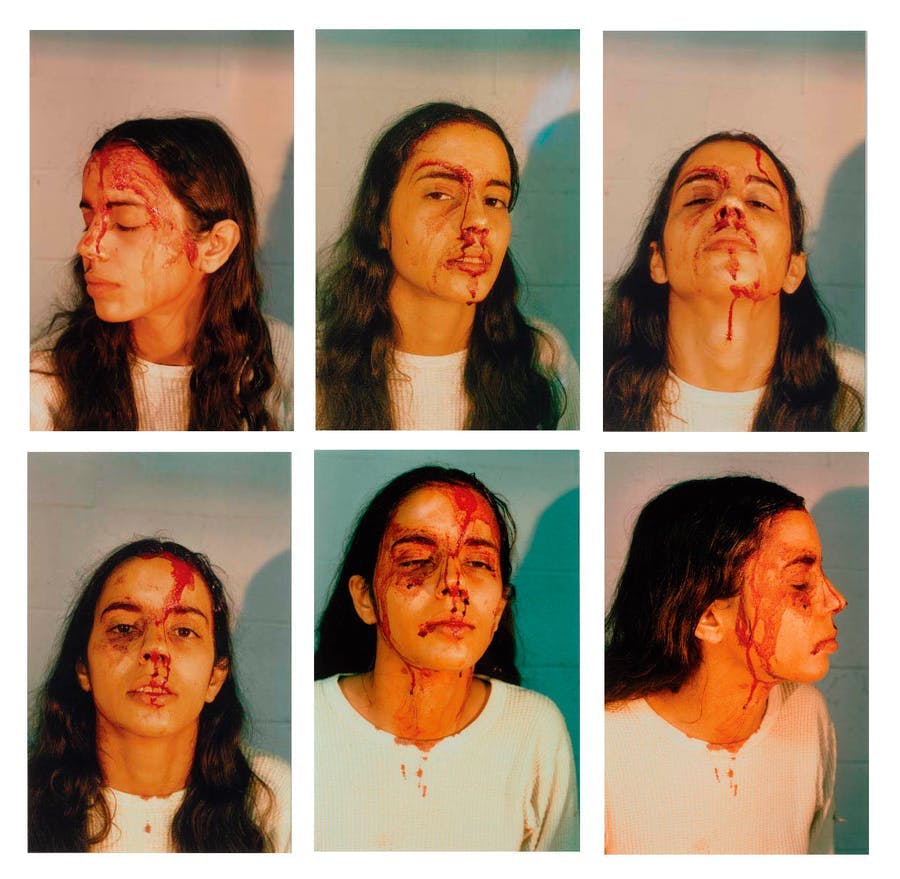
Andre, initially arrested, was acquitted during the trial as not guilty on grounds of 'reasonable doubt'. According to the court, Mendieta's death was an accident, or a suicide, even though the two been drinking and some witnesses said they heard a violent quarrel between them just before Mendieta's death. Many consider the hypothesis of suicide unlikely: Mendieta was happy at the time. Others, however, believe Andre incapable of harming his wife.
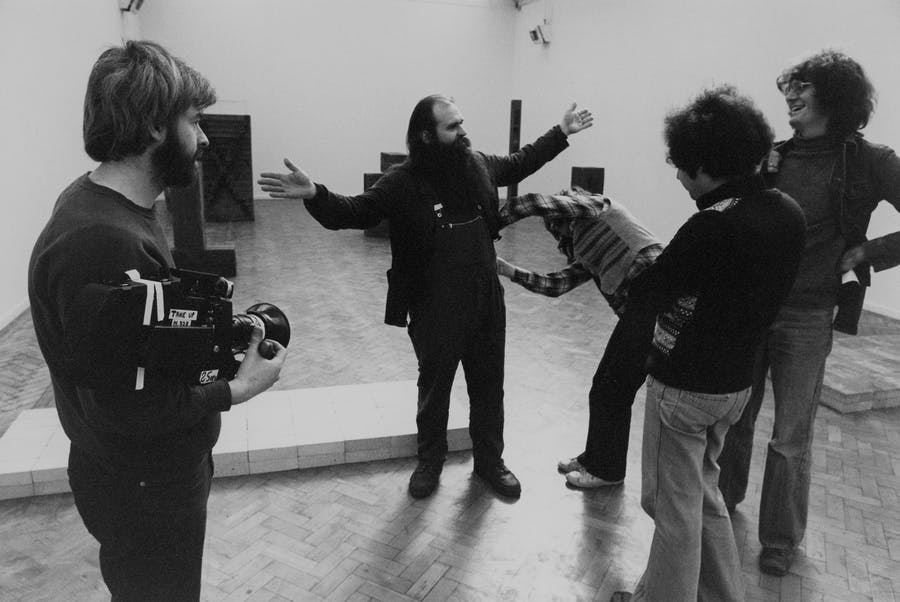
The strange circumstances surrounding the Cuban immigrant artist's tragic death have troubled many for decades and inspired an activist movement in honor and defense of Mendieta. WHEREISANAMENDIETA is an 'international collective of people who fight against the indifference of cultural institutions towards women/women of color/ethnic minorities/trans/oppressed and marginalized groups'. The aim is mainly to shed light on Mendieta's death during exhibitions and events dedicated to her or to the circle of artists who gravitated around her during the years of her career.
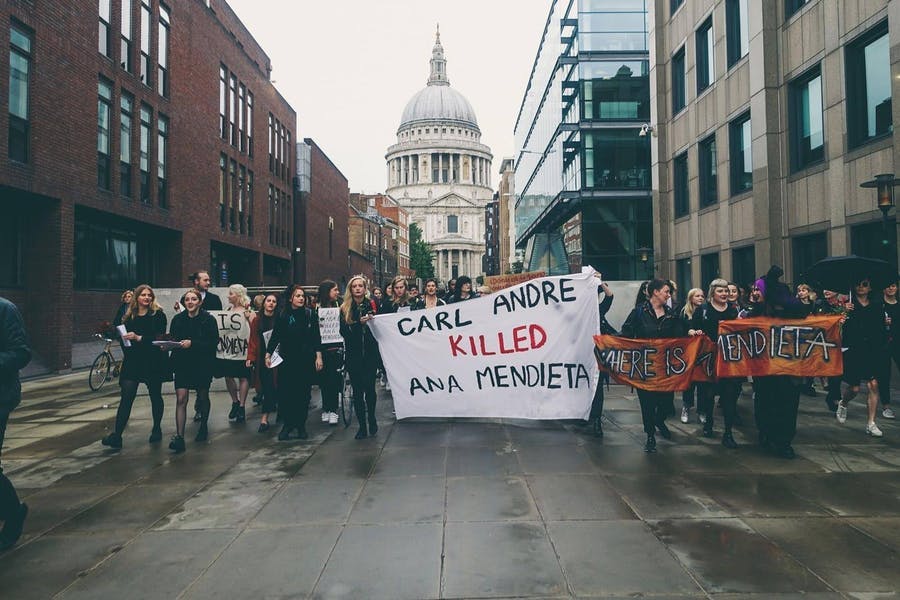
“We denounce the world of racist and patriarchal art that has worked against her to support her murderer. Andre is just one man on an endless list of names of men whose violent past is systematically eclipsed by their status and privileges and who continue to be celebrated, while the voices and legacies of their victims are systematically silenced." From Activism // The Art World is Complicit: An Interview with WHEREISANAMENDIETA - Berlinartlink.com.
Related: 5 Feminist Masterpieces
During the court proceedings against Andre, several figures from the art world took part in his defense. Frank Stella paid the $50,000 bail for his friend, who has continued his promising and profitable career since 1988, the year he was finally acquitted. During the trial, Mendieta's art was used as 'proof' of her alleged mental instability and some people close to her have long talked about a libel campaign to make her look like a "crazy Cuban".

Mendieta's story begins in Cuba, in the early 1960s. At the time, 14,000 children were boarded on Pan Am scheduled flights from Cuba to Florida. Called 'Operation Peter Pan', this mission was an attempt by the United States to destabilize Cuba's socio-political structure, focusing on what each family held dearest: their children.
With the promise of family reunification and the spread of false news and fear about the new Castro government, the United States and Catholic Charities sent children to the United States at the request of their parents. Among these children was the 12-year-old Ana, who was expatriated in 1961, together with her sister Raquelín at the behest of her father, who was implicated in the invasion of the Bay of Pigs. After a short stay in a reception centre and with various foster families, she arrived in Iowa with her sister and was reunited with her mother and brother in 1966. Her father, imprisoned for disloyalty to Castro until 1979, died shortly after arriving in America.
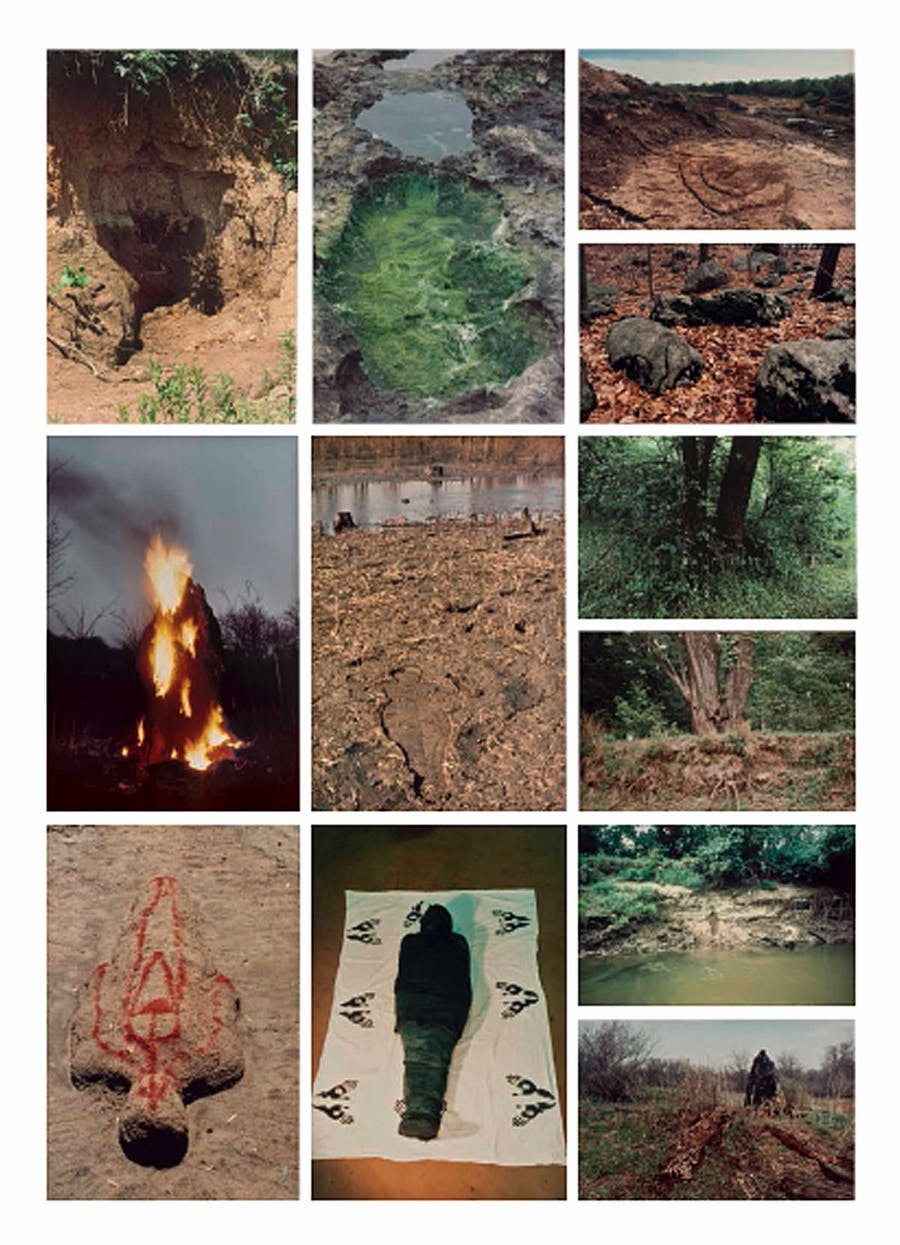
The theme of belonging, ties and uprooting are present in Mendieta's work, whose production is outlined as a continuous dialogue between Land Art and Body Art, often called 'earth-body'. Its visual lexicon is made up of elements of nature – earth, fire, air, water – and the use of her body in the exploration of the world, in the search for a connection with the universe.
Related: The 15 Most Expensive Female Artists
Mendieta began to approach art at the University of Iowa, graduating with a BA and MA degree in Painting (1972) and a MFA in Intermedia (1977). During those years she had a relationship with the artist and academician Hans Breder, a fundamental figure in her training, who made her discover the notion of 'interdisciplinary practice', citing artists of the calibre of Marcel Duchamp and Yves Klein. It was in college that she was confronted with discrimination and began to broach the issues of violence and blood. After the rape and murder of Sarah Ottens, which took place on campus, Ana invited an audience to the Rape Scene (1973) performance in her university apartment, covering herself in blood and getting tied to a table.
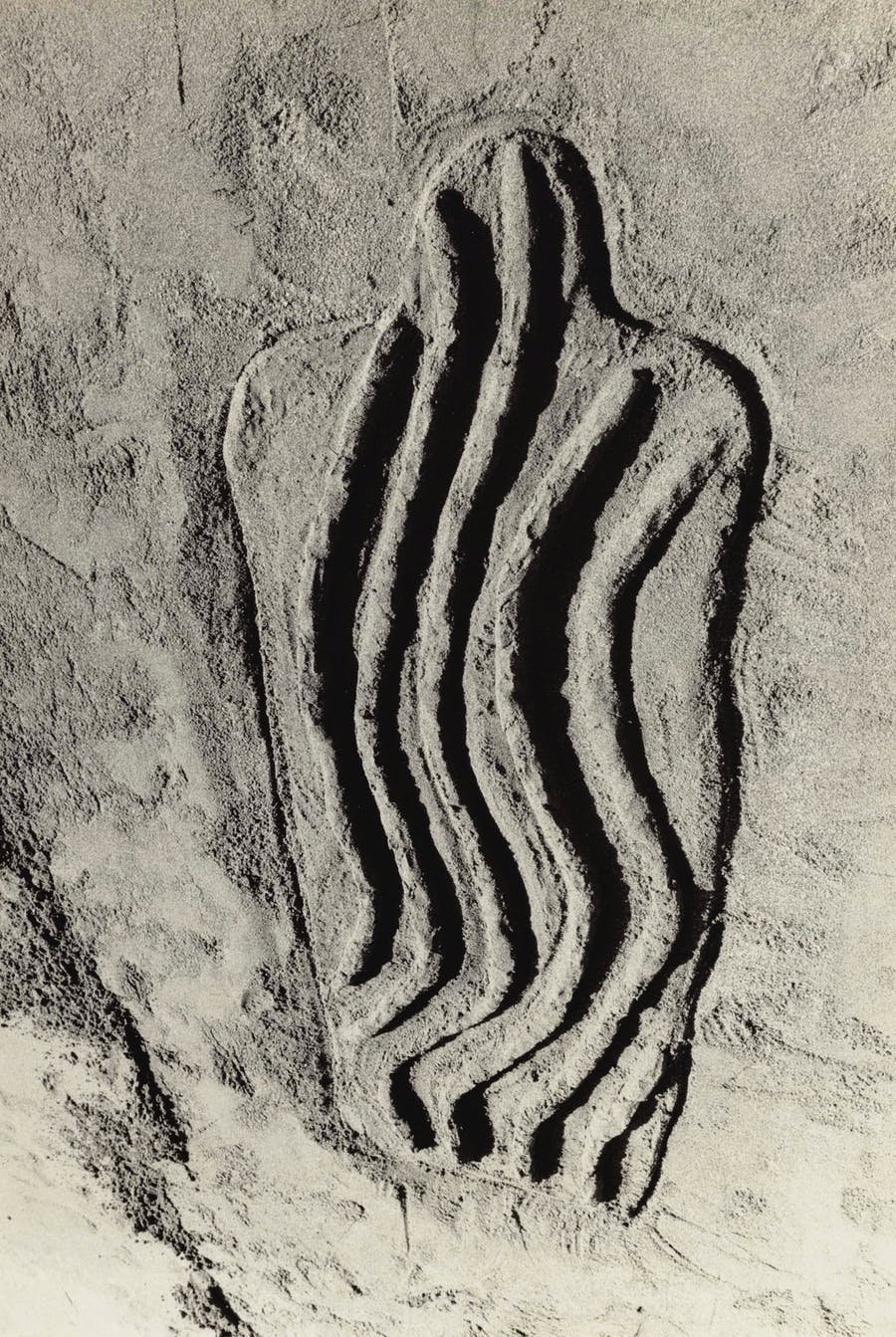
During a trip to Mexico, in the mid-seventies, Mendieta gave life to the Siluetas, works in which her body leaves an imprint in the ground, which she then decorated with stones, leaves, flowers and wood, and sometimes filled with red paint. She wrote, "My art is founded on the belief that there is a universal energy that runs through everything from insect to man, from man to soul, from soul to plant, from plant to galaxy."
Related: Marina Abramović: Not Just Any Body
In 1978 she arrived in New York. She became friends with the great feminist artists of the time and joined Artists in Residence Inc (A.I.R. Gallery), the first American art gallery dedicated exclusively to women. Two years later, she ended her collaboration with A.I.R with these words: "American feminism as it is now, is reserved exclusively for middle class whites." Her work, from then on, was to challenge these limits established by society.
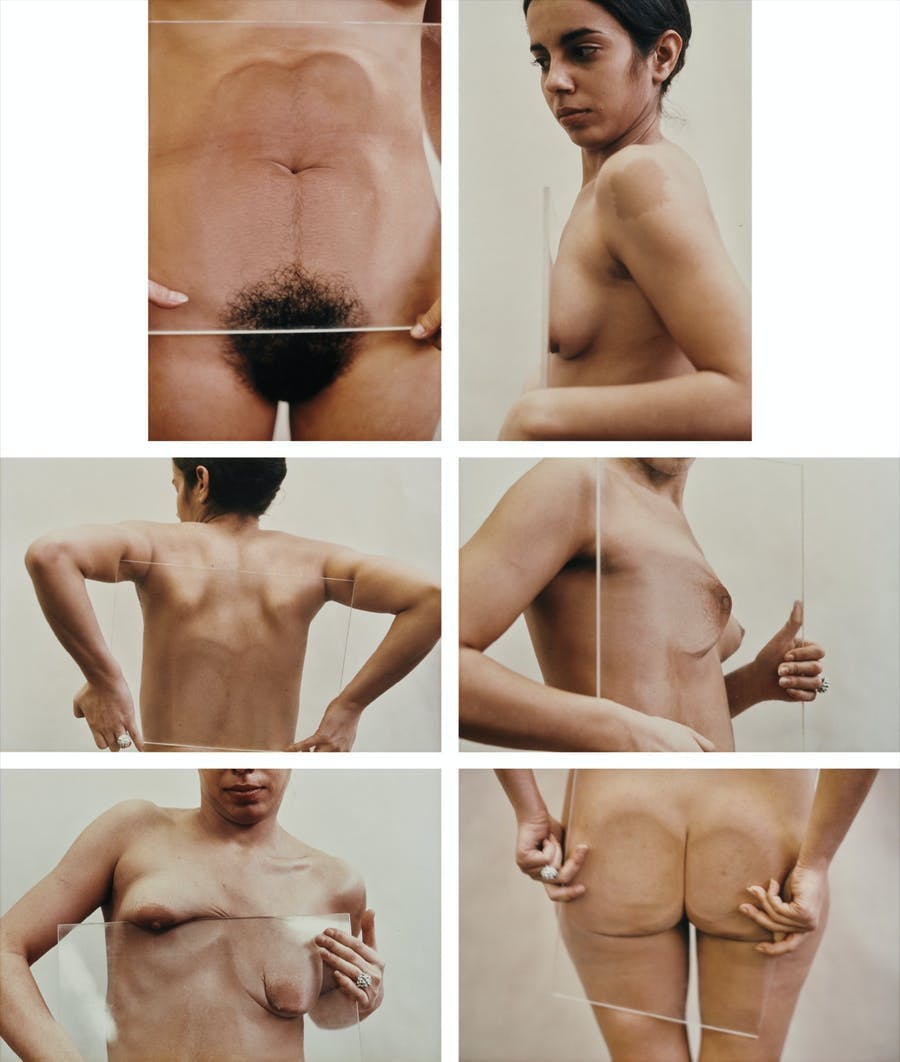
During her time in New York, however, she met the minimalist sculptor Carl Andre. The two artists, although the opposite personalities – tangible also in their artistic creations – fell in love. Liliana Porter, an Argentine artist friend of the couple, said, “Carl was very methodical in his daily life, he followed the routines, Ana was the opposite. She liked her strong personality (...) and somehow she needed a more mature and constant point of reference."
Related: The Dinner Party: A Table for the World’s Most Influential Women
In 1983, Mendieta moved to Rome for an artist's residency at the American Academy in Rome. The Italian stay was a positive and fruitful one: she felt completely accepted in the Italian capital. In a private ceremony, on January 1985, Ana Mendieta and Carl Andre married in Rome.
A few months after returning to New York that year, Mendieta confided to a friend her suspicion that Andre had had another relationship while she was in Rome and he was busy working in Berlin. However, the couple appeared happy and the two devoted themselves to their art and social life in the city, often guests of dinners with famous friends. On the evening of September 8, 1985 however, they decided to stay at home, ordering Chinese food and a bottle of champagne.
Mendieta's body was found the next morning on the roof of a shop, after she fell from the window of her apartment on the 34th floor. The tragic end of the life of the young artist, who devoted herself, body and soul, to art, is still a mystery and the question of Where is Ana Mendieta? endures.


